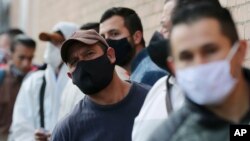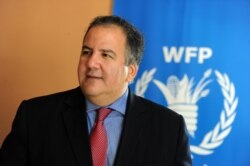The World Food Program is appealing for international solidarity — and funding — to prevent the COVID-19 pandemic in Latin America from also becoming a hunger pandemic.
Confirmed coronavirus infections have risen to around 1.6 million in Latin America, turning the region into the new epicenter of the pandemic. The WFP said Latin American countries are suffering from both a health crisis and a food crisis.
A WFP food assessment in Latin America and the Caribbean last year estimated that eleven million people in the region would be food insecure in 2020. Because of COVID-19, WFP now projects that number will rise to 14 million people who will be threatened with severe food shortages this year.
WFP regional director for Latin America and the Caribbean, Miguel Barreto, said climate shocks, insecurity and displacement, as well as mass unemployment due to COVID-19 lockdown measures make the region extremely vulnerable.
“So. now with COVID-19, the situation is, of course, deteriorating further,” Barreto said. “This is a time for, of course, solidarity and to come together and the time is really now. We need to act quickly to prevent this crisis to become what my director called a hunger pandemic.
Barreto said international financial institutions, governments, UN and non-governmental organizations must join forces to protect the most vulnerable populations from a potentially devastating fallout from the coronavirus pandemic.
He cites Haiti, the so-called Dry Corridor in Central America, and the migrant situation in South America as the region’s three hotspots. He tells VOA that WFP needs $400 million to respond to these emergencies, but understands it faces stiff competition from other financial requests worldwide.
“For instance, in Latin America is that we do not have conflicts,” Barreto said. “So, these emergencies are not visible. But what we are looking now is that the impact of the COVID beyond the health area is now surpassing the capacity of the government to respond to other situations like food insecurities.”
Haiti currently has some 700,000 people who are facing food shortages. WFP expects that number to jump to 1.6 million in the coming months.
Extreme weather conditions have afflicted 2.2 million people in the Dry Corridor of Central America. WFP reports many people in El Salvador, Guatemala, Honduras, and Nicaragua have lost their crops due to drought. Now, they have to contend with torrential rains and flooding.
The U.N. food agency reports many migrants in South America affected by COVID-19 lockdown measures are unprotected by government social protection programs. It says thousands of migrants who fled economic hardship in Venezuela and went to Colombia are returning home because they cannot find work and are unable to feed themselves.








